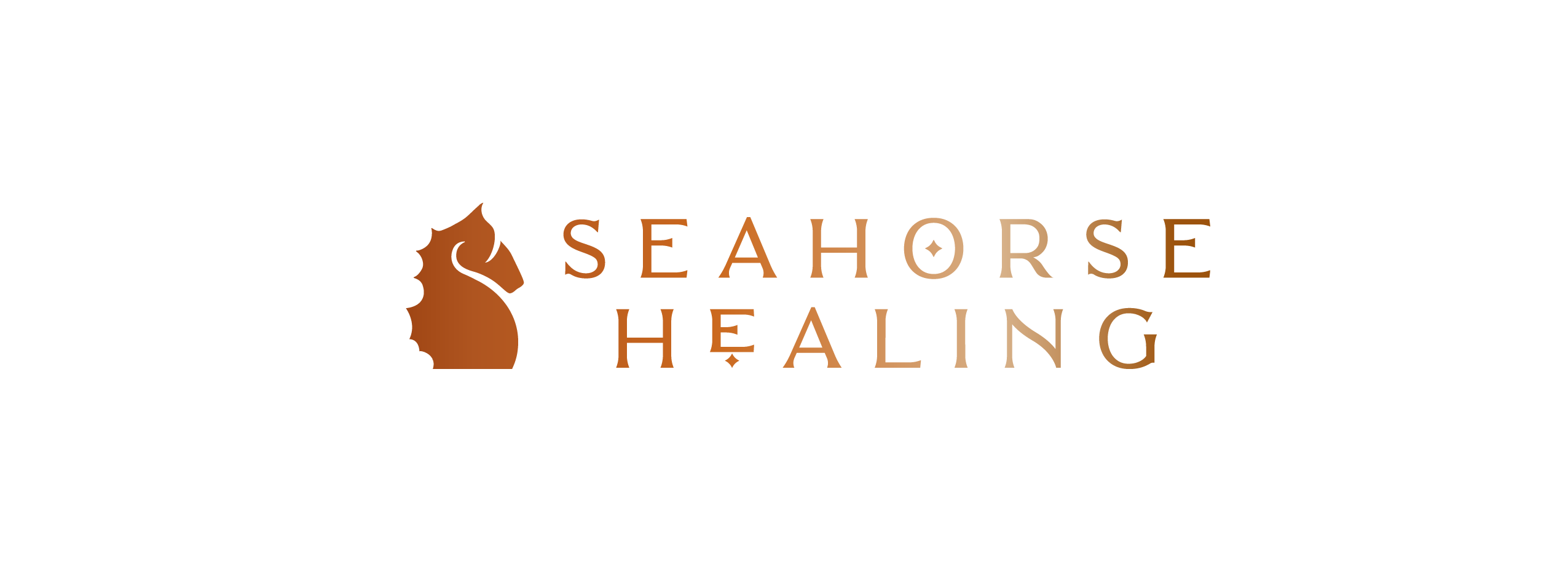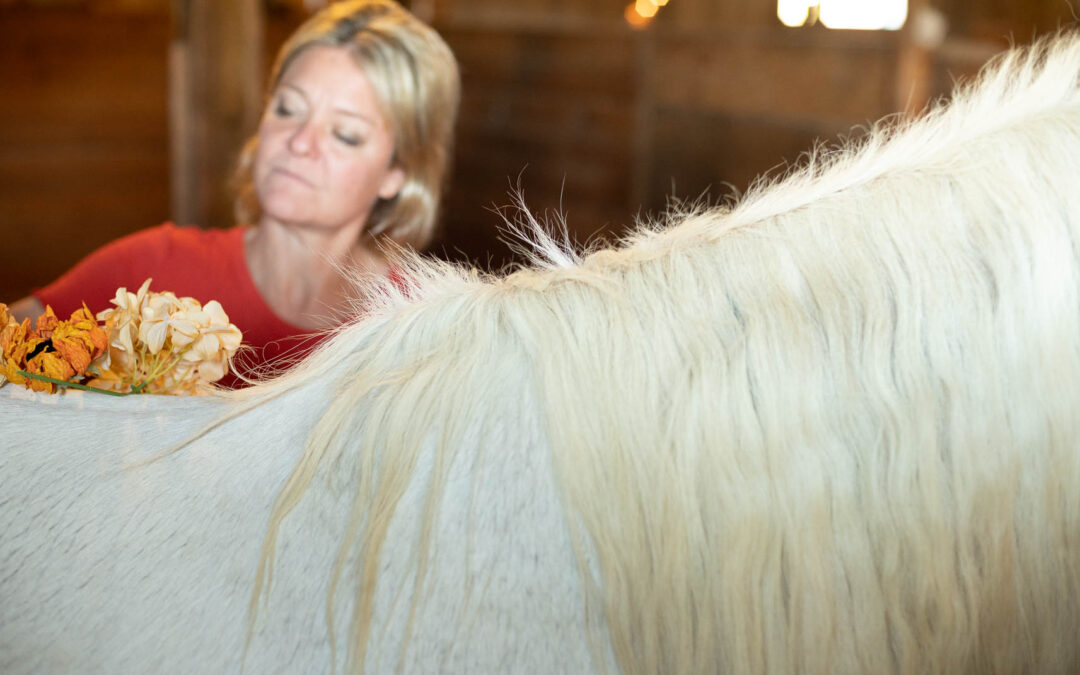Horse people wonder at how to put this into words, and non-horse people often ask, “What is it about horses that so naturally leads to healing?” Anyone who has dedicated their life to spending time with horses feels it in their bones … a rough day improved after being at the barn, anxiety drifting away with each minute passed alongside our majestic partners.
To pass time either quietly with horses or working with them physically requires us to drop out of our ego selves and be our present, meditative, most earthly – and spiritually sound – version of ourselves. There is no room for falseness or bravado, no space for the armor and masks we wear around in our worlds from day to day. Horses require us to step out of the person we think we’re supposed to be and into the person we truly are. To exist with them in any other way is often how we get hurt.
At the barn, horses don’t care what we look like. They don’t understand the stress and pressure of our human worlds. They are simply interested in our most honest, internal selves. In this way, becoming a horse person in earnest can be intimidating. When someone new to horses shows up at the barn, they often mention their trepidation … almost always in reference to the physical size of horses. I do my best to confirm that fear. Anyone new or old to horses should always remember the size and power they possess.
In truth, the hard work of becoming a partner to horses is not what most people think. It takes place inside us. We must become incredibly clear in our communication, patience, boundaries, know when to lead and when to follow, when to say yes and when to say no, and always, always … know where our feet are.
Know where your feet are. It’s a simple idea and one of the first lessons you learn as a horse person. Horses know where their feet are. You better know where yours are. At its most basic form, it’s a reminder to keep you from getting stepped on. But what does it really mean to know where your feet are, to feel safe and grounded in your body and to the earth? To really know who you are inside, how you relate to the world and to others, what your sincerest hopes and dreams are.
What is it about horses as healers? They are profounder teachers than the mind can imagine.
I often meet new clients at the barn and think to myself, If you met this person in the grocery store you’d think they’ve got it altogether. It turns out that’s pretty much never true. We get to the cozy nook at the back of the barn, and layers of pain show up, life experiences that would blow your hair back.
Remember that when you’re out in the world. Each person really does have a story you know nothing about. Horses are incredible coaches in the process because they have the most unique gift. They can disarm a person’s tightly built armor and walls, and they also can stand so gently for someone who’s already blown open. They lead from such a place of strength and softness.
In the wild, horses are prey animals meaning that they are the hunted and have an entirely different operating system than we do. Their survival depends on it. When we show up with an outer bravery that doesn’t match our inner sadness or fear, horses sense this incongruity, and it makes them incredibly uncomfortable. We become the lion in the woods, alerting their most primal instinct to flee. We send them the message that we don’t know where our feet are. We don’t know who we are. We are not showing up in earnest.
As prey animals, horses reflect the hyper-vigilance of a human who has experienced trauma. They are an incredible example of how one can be totally in tune to possible danger and also be okay with it. They are both cautious and curious, alert and resting. For anyone who has experienced trauma, they are natural partners and profound teachers in this way because they meet us right there, and they get it. Horses find a way through to humans, allowing us to feel safe near them even if we don’t feel safe out in the world or in our own bodies. In the rawness of trauma, we often don’t have a sense of our feet on the earth, and that’s okay. When we show up seeking honest healing, horses meet us exactly where we are and tend to our hearts and bodies with softness and grace.
In the round pen, we talk a lot about drive and draw, pressure and release. These lessons are more clear and acute in the round pen, but they are at play in every interaction we have with our horses – largely because of our predator/prey relationship. The more time we spend with horses, the more we can see that the same is often true of humans, especially humans with a deep aptitude for emotion, in a state of raw vulnerability, or those with strong empathic response to others. Apply too much pressure and you’ve lost them. Allow for too much release and again, you’ve lost them. The conversation must dance between the two, like an unwritten agreement to honor one another in this way: “I will meet you where you are. Now it’s your turn to meet me where I am”.
As a coach, I’m often fascinated by experiencing student and client learning styles. Some thrive under pressure. Others need the freedom to explore out on their own. I do my best to nurture them to grow within their most natural learning style. The same can be said for horses. Can we learn to meet them where they are and have the conversation with them that they can tap into? Can we know ourselves enough to know where our feet are and understand where theirs are?
To enter into their world is to enter into a dance of listening on the deepest level – to a creature and experience so much greater than ourselves. To enter into this world is to open space within our hearts and minds that otherwise doesn’t get accessed or activated often. It is a living, moving meditation to enter into this world. We find answers that ring so truly that we don’t doubt them for a moment but for when we share our stories later with a suspicious ear.
Maybe the magic of horsemanship lies in the fact that horses require us to encompass both ends of many spectrums, to embody a totality of being human. We must be firm and yet gentle, strong and also soft, clear in our communication and flexible in the conversation. We must know where our feet are when we’re working from the lens of horsemanship. In gestalt sessions, we help you find your footing again. There is nothing too big or too small, nothing too lost or too found, to enter into a path of profound partnership with horses.
To learn about horses is to know a well that deepens and deepens, and ultimately one that returns us to our truest selves.


Recent Comments